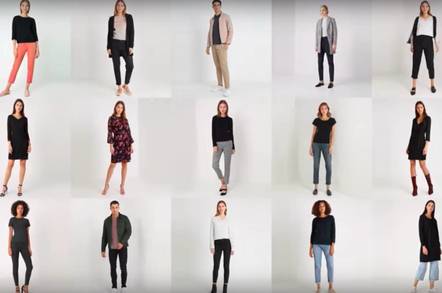People go to a wide range of sources for dress style advice, from magazines to closest friends to Instagram. Before long, however, people might have the option to ask their smartphone.
A University of Texas at Austin computer science team, in partnership with analysts from Cornell Tech, Georgia Tech and Facebook AI Research, has built up a artificial intelligence system that can take a gander at a photograph of an outfit and propose supportive tips to make it progressively popular. Proposals may incorporate changes, for example, choosing a sleeveless top or a more extended jacket.
“We thought of it like a friend giving you feedback,” said Kristen Grauman, a teacher of computer science whose past research has generally centered around visual acknowledgment for artificial intelligence. “It’s also motivated by a practical idea: that we can work with a given outfit to make small changes so it’s just a bit better.”
The instrument, named Fashion++, utilizes visual acknowledgment systems to break down the shading, example, surface and state of articles of clothing in a picture. It thinks about where alters will have the most effect. It at that point offers a few elective outfits to the client.
Fashion++ was prepared utilizing in excess of 10,000 pictures of outfits shared openly on online locales for style devotees. Discovering pictures of trendy outfits was simple, said graduate understudy Kimberly Hsiao. Discovering unfashionable pictures demonstrated testing. Along these lines, she thought of a workaround. She blended pictures of in fashionable outfits to make less-chic models and prepared the system on what not to wear.
“As fashion styles evolve, the AI can continue to learn by giving it new images, which are abundant on the internet,” Hsiao said.
Grauman and Hsiao will exhibit their methodology at one week from now’s International Conference on Computer Vision in Seoul, South Korea.
Like all AI systems, predisposition can sneak in through the informational indexes for Fashion++. The scientists brought up that vintage looks are more enthusiastically to perceive as polished on the grounds that preparation pictures originated from the internet, which has been in wide utilize just since the 1990s. Moreover, in light of the fact that the clients submitting pictures were for the most part from North America, styles from different pieces of the world don’t appear to such an extent. Another test is that numerous pictures of trendy garments show up on models, however bodies come in numerous sizes and shapes, influencing style decisions. Next up, Grauman and Hsiao are moving in the direction of giving the AI a chance to realize what flatters different body shapes so its suggestions can be increasingly custom fitted.
“We are examining the interaction between how a person’s body is shaped and how the clothing would suit them. We’re excited to broaden the applicability to people of all body sizes and shapes by doing this research,” Grauman said.
Disclaimer: The views, suggestions, and opinions expressed here are the sole responsibility of the experts. No Watch Mirror journalist was involved in the writing and production of this article.





